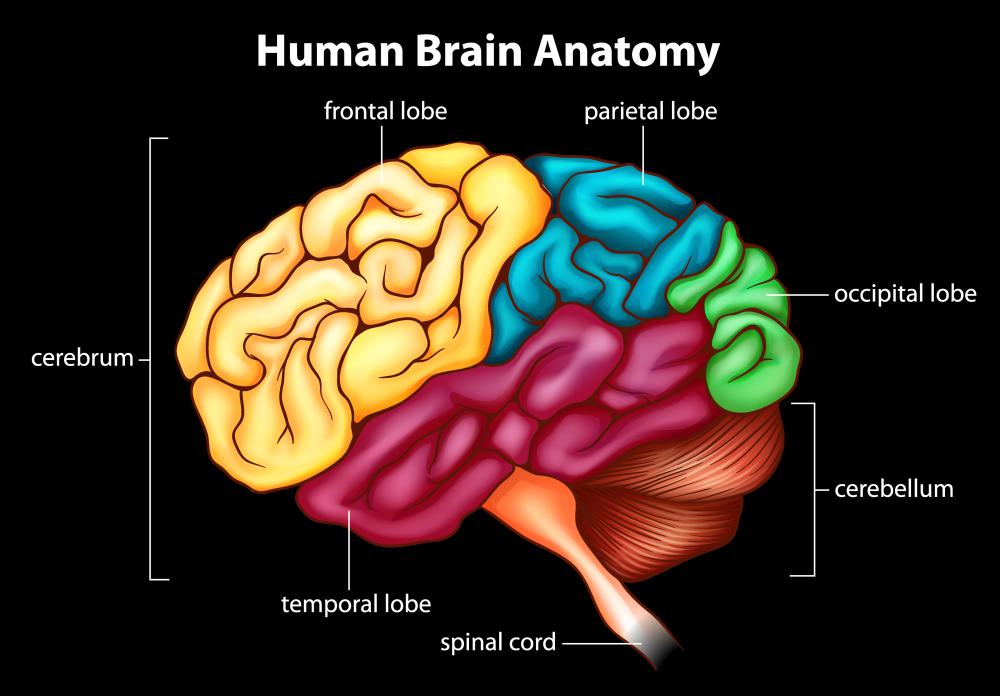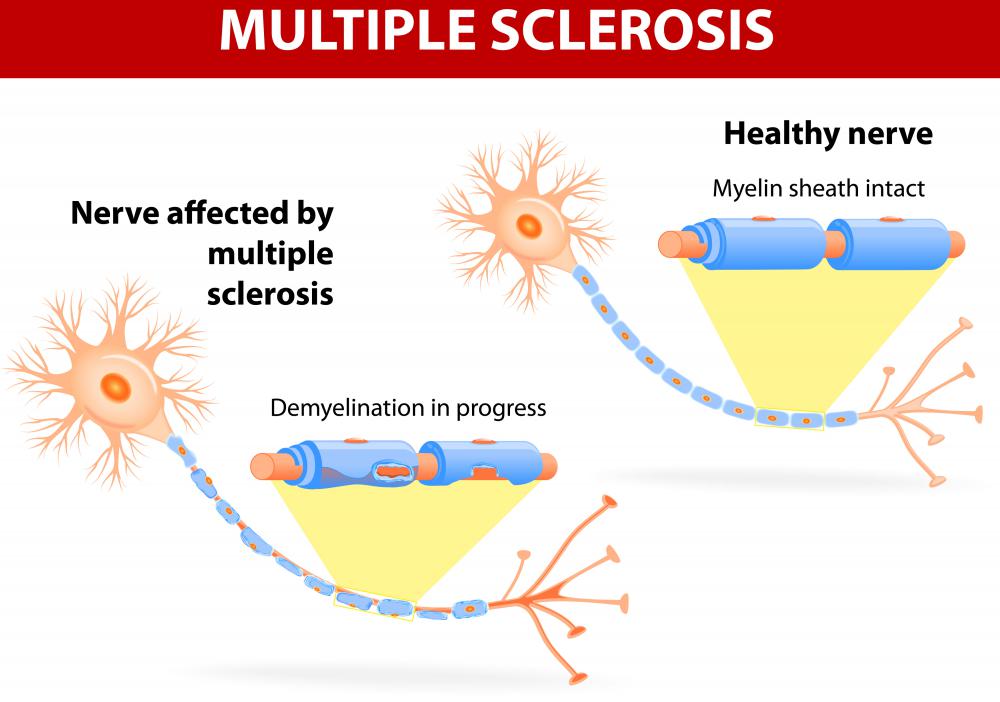At TheHealthBoard, we're committed to delivering accurate, trustworthy information. Our expert-authored content is rigorously fact-checked and sourced from credible authorities. Discover how we uphold the highest standards in providing you with reliable knowledge.
What are the Different Types of Spinal Cord Disease?
The spinal cord is essential in relaying chemical impulses to and from the brain, controlling reflexes, and sensing pain. Individuals who are diagnosed with spinal cord disease often have significant problems controlling muscle movement, seeing, and speaking, and some patients suffer from partial or complete paralysis. Most cases of spinal cord disease are directly related to spinal column injuries, though symptoms may also develop as a result of genetically inherited conditions. Spinal cord problems may result from such neurological and demyelinating disorders as multiple sclerosis, transverse myelitis, and cancer. The majority of injuries and illnesses that affect the spinal cord are debilitating to a certain degree and often incurable, though many people are able to maintain fulfilling lifestyles with the help of prescription medications and physical therapy.
When vertebrae or nerves in the spinal cord become damaged, individuals may experience intense pain, muscle spasms, and decreased muscle movement. Severe cases of spinal cord injury can result in the loss of the ability to sense pain and temperature. Some individuals with severed nerves experience paralysis, where they are unable to move, speak, or control bodily functions. People with spinal cord disease related to injury are often given oral medications to reduce pain and inflammation, braces to straighten their spines, and surgical procedures to remove or repair damaged bone tissue. Some patients are able to regain movement with intensive physical therapy and ongoing medical treatment.

Proper neural functioning depends on the body's ability to protect nerve fibers by surrounding them with a type of fatty tissue known as myelin. Many types of spinal cord disease can inflame or deteriorate myelin sheaths, exposing nerves and disrupting their ability to work correctly. Two of the most common types of demyelinating disorders are multiple sclerosis and transverse myelitis, conditions that arise from genetic mutations and the presence of certain autoimmune diseases. Many people with multiple sclerosis or transverse myelitis experience numbness, muscle weakness, fatigue, and chronic headaches. These diseases can become debilitating and often fatal if not managed properly with physical therapy and prescription medications.

The symptoms of multiple sclerosis and transverse myelitis may be identical to those experienced by individuals with more serious conditions, such as cancer. Certain cancers can produce tumors on the spinal column and deteriorate myelin sheaths, resulting in a severe form of spinal cord disease. Licensed orthopedists, neurologists, and oncologists can screen for cancerous growths using magnetic resonance imaging and ultrasound machines. When problems are recognized at the first sign of symptoms, surgery and medications often prove beneficial in removing tumors and stopping the spread of cancer to other parts of the body.
AS FEATURED ON:
AS FEATURED ON:














Discuss this Article
Post your comments